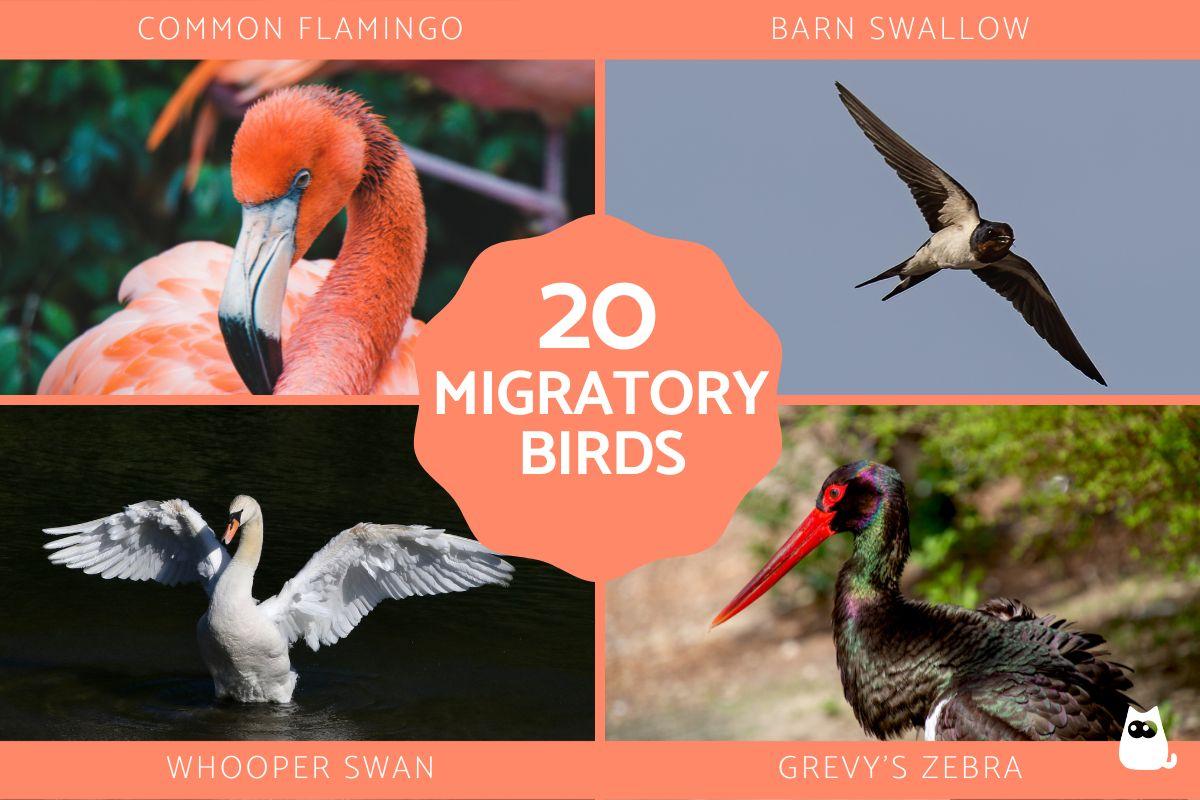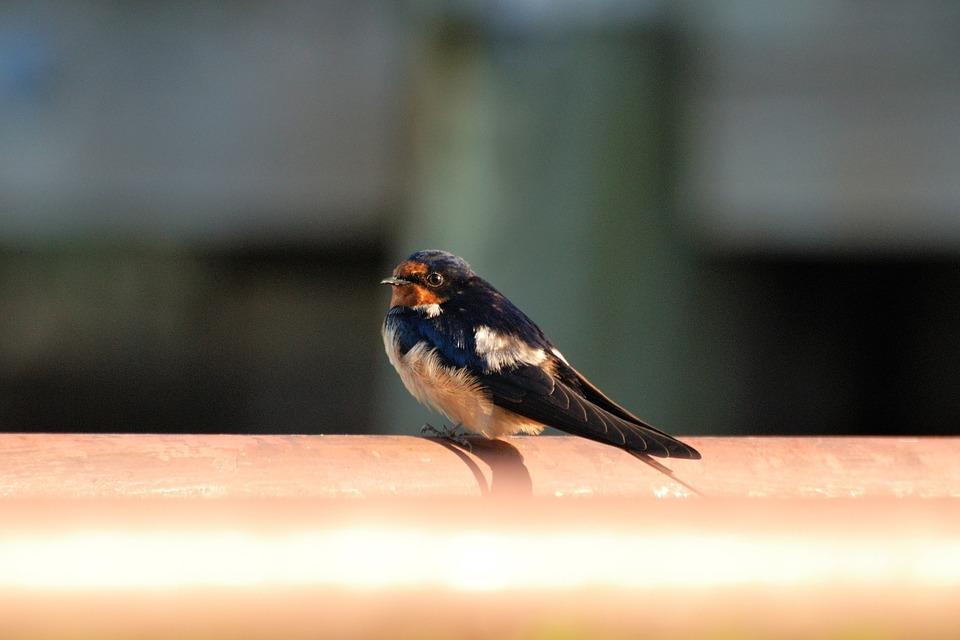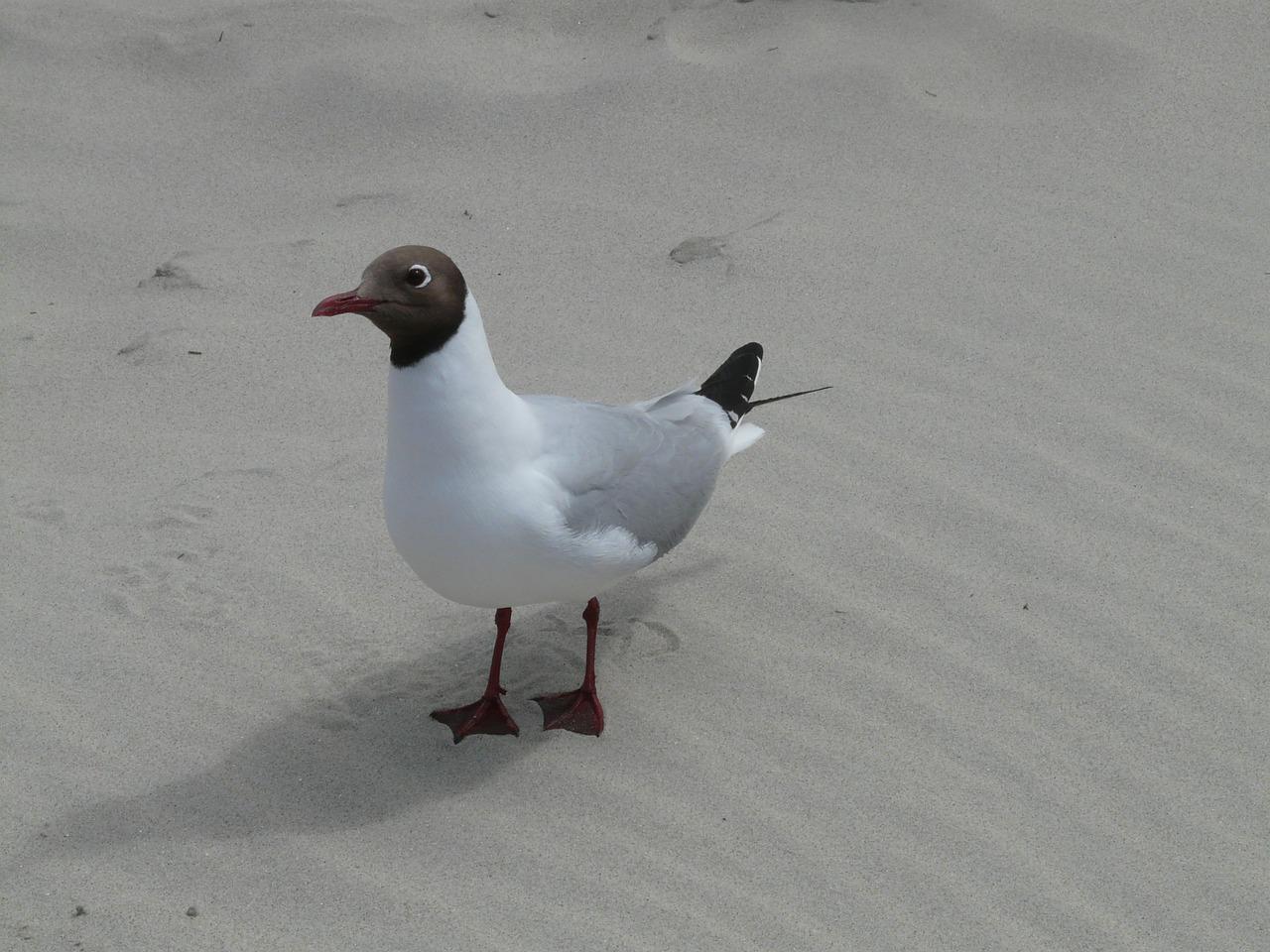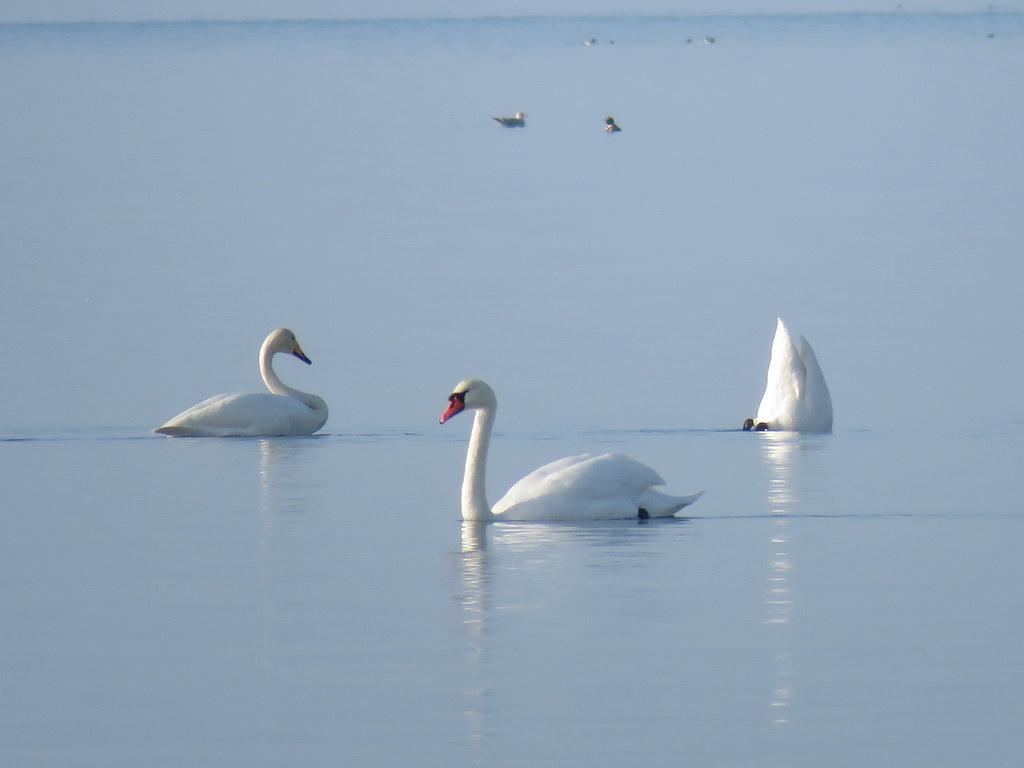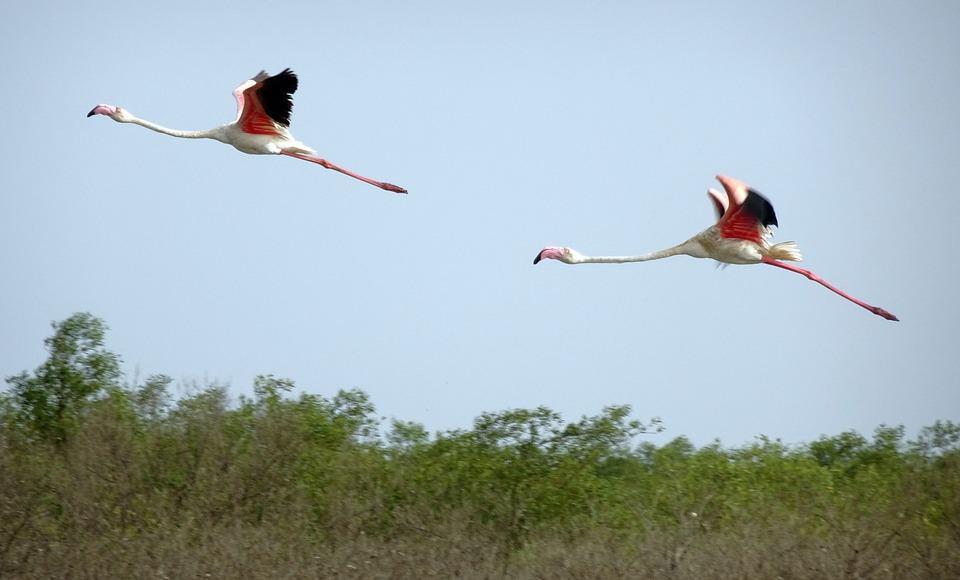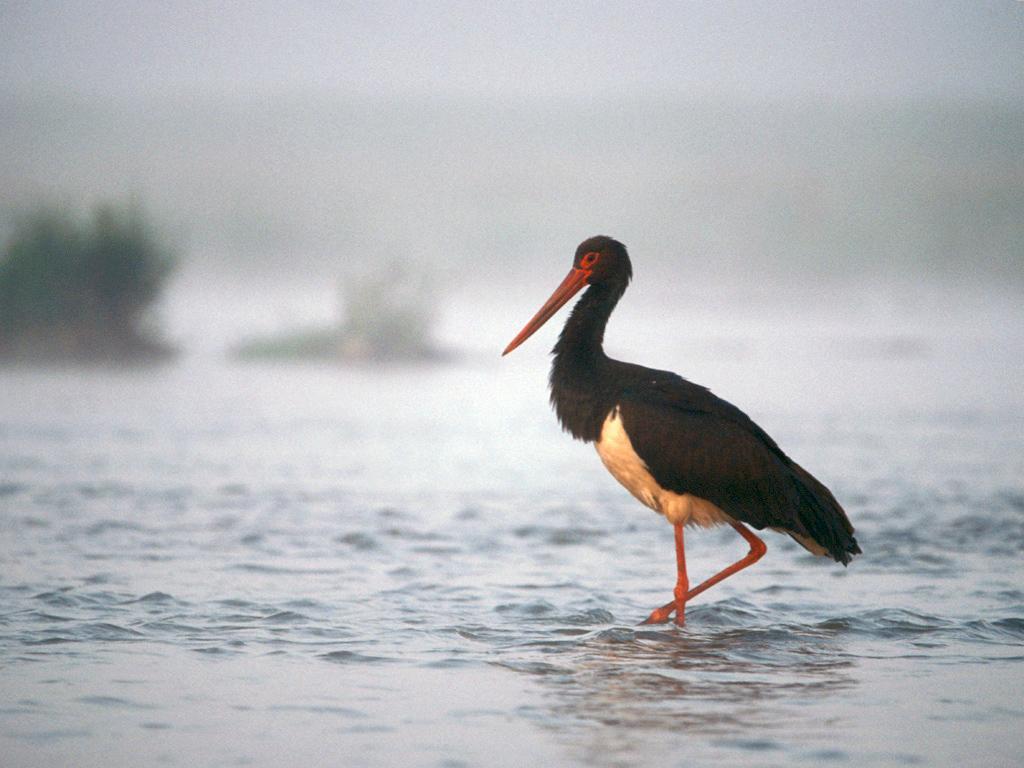What Are Migratory Birds? - A Guide to Bird Migration


Embarking on epic journeys that span continents and defy geographical barriers, bird migration is a captivating natural phenomenon. With remarkable navigational skills and unwavering determination, millions of birds take to the skies each year, traversing vast distances in search of seasonal havens. From the Arctic tundra to the temperate forests and beyond, these avian travelers showcase unparalleled feats of endurance and adaptability.
In this AnimalWised article, we explore what bird migration is, the reasons behind this behavior, the diverse migration patterns of different species, and the fascinating challenges these birds face during their incredible journeys
- What is animal migration?
- Characteristics of animal migration
- Examples of migratory birds
- Barn swallow
- Black-headed gull
- Whooper Swan
- Common flamingo
- Black stork
- Other migratory birds
- Birds that migrate the longest
What is animal migration?
Animal migration is a fascinating natural phenomenon, characterized by mass movements of individuals within a species. Researchers have long been intrigued by the strength and persistence of these migrations, as they seem to be driven by forces beyond the animals' control. The process appears to be influenced by factors such as the biological clock, changes in daylight hours, and temperature fluctuations.
While migratory birds have been extensively studied, it's essential to recognize that migration is not limited to avian species. Many other animal groups, including plankton, mammals, reptiles, insects, and fish, also engage in migratory journeys, highlighting the diversity of this survival strategy across different creatures.
There are two main types of animal migration:
- Seasonal migration: This is the most common type of migration, where animals move between different regions at specific times of the year. Some species migrate from breeding grounds to more favorable habitats for feeding and survival during harsh seasons. Others undertake long-distance journeys to follow the availability of food as the seasons change. For example, some birds fly thousands of miles from their breeding grounds in the Northern Hemisphere to warmer areas in the Southern Hemisphere during the winter.
- Altitudinal migration: This type of migration involves vertical movement within a particular geographic area. Animals, especially those found in mountainous regions, move up and down slopes in response to changing environmental conditions. They may move to higher altitudes during the warmer months to find cooler temperatures and better food availability, and then return to lower altitudes when winter approaches.
Understanding animal migration goes beyond scientific curiosity; it plays a crucial role in comprehending ecosystem dynamics. Moreover, migration influences species distribution, gene flow, and ecological interactions. As human activities and environmental changes can impact migration patterns, studying and conserving migratory species becomes increasingly important.
Learn more about birds in this other article, where we have listed 15 of some of the most extraordinary facts about birds.
Characteristics of animal migration
Animal migration is characterized by several distinct features that make it a remarkable and essential aspect of the natural world. Some of the key characteristics of animal migration include:
- Migration typically occurs at specific times of the year and follows a seasonal pattern. Animals embark on their journeys during certain seasons to take advantage of favorable environmental conditions, such as abundant food, suitable breeding sites, or milder climates.
- Migration involves a large-scale movement of individuals within a species. Sometimes, entire populations or communities of animals undertake these journeys together, creating impressive displays of group movement.
- Animal migration is primarily driven by instinct rather than learned behavior. It is an inherent trait in many species, and individual animals may follow migratory paths they have never traveled before.
- Migratory journeys can cover vast distances, ranging from hundreds to thousands of miles. Some species, like certain birds and marine animals, undertake truly epic journeys across continents and oceans.
- Migratory animals possess remarkable navigational abilities. They use various cues and mechanisms, such as the Earth's magnetic field, the position of the sun, stars, and landmarks, to find their way along established routes.
- During migration, animals are not aimlessly wandering. They have specific destinations in mind, such as breeding grounds, feeding areas, or overwintering sites, where they find conditions suitable for survival and reproduction.
- Migration allows animals to adapt to changing environmental conditions. It helps them avoid harsh weather, find food resources, or access more suitable habitats, enhancing their chances of survival.
- While migration requires significant energy expenditure, it is an adaptive strategy that allows animals to access resources that might not be available year-round. By traveling to different locations for specific purposes, they conserve energy in the long run. Animals preparing for migration often store energy in the form of fat. This allows them to sustain themselves during the journey without the need to constantly find food along the way.
- Migration plays a crucial role in ecosystem dynamics. It influences species distribution, gene flow, predator-prey relationships, and even the nutrient cycling in various habitats.

Examples of migratory birds
Many bird species are known for their impressive, long migratory movements, which typically take them from their nesting territories in the north to warmer regions in the south during the winter. Some notable examples of migratory birds include:
1. Barn swallow
The Barn Swallow (Hirundo rustica) is a migratory bird with a widespread distribution across various climates and altitudinal ranges. It is predominantly found in Europe and North America during its breeding season. However, when winter approaches, these graceful birds undertake impressive journeys to more favorable regions for survival.
Their wintering grounds are diverse and can be found in sub-Saharan Africa, southwestern Europe, South Asia, and South America. These far-flung locations serve as their temporary havens during the colder months, providing them with abundant food resources and milder weather conditions.
Despite its vast range and migratory prowess, the Barn Swallow faces challenges that have contributed to a decline in its population. Human activities, habitat loss, changes in agricultural practices, and climate change have all played a role in affecting their numbers. As a result, the International Union for Conservation of Nature (IUCN) has classified the Barn Swallow as a species of "least concern," indicating that while its population is decreasing, it is not currently considered to be critically endangered.
Don't miss out on our in-depth article that unravels the world of swallow migration. Delve into the fascinating details of why, how, and where these graceful birds undertake their incredible journeys.

2. Black-headed gull
The black-headed gull (Chroicocephalus ridibundus) is a versatile bird found primarily in Europe and Asia, although it can also be spotted in Africa and America during breeding or migratory periods. This adaptability to various regions contributes to its wide distribution across different continents.
The black-headed gull breeds mainly in Europe and Asia, often in freshwater habitats such as marshes, lakes, and rivers. During the breeding season, they establish colonies in coastal areas and inland wetlands.
Like many avian species, the black-headed gull is susceptible to various threats. Among these potential hazards are avian influenza, avian botulism, coastal oil spills, and exposure to chemical contaminants. Despite these risks, the International Union for Conservation of Nature (IUCN) has categorized the black-headed gull as a species of "least concern."

3. Whooper Swan
The whooper swan (Cygnus cygnus) is a majestic and large swan species known for its distinctive whooping call. Another remarkable aspects of the whooper swan is its migratory behavior. It undergoes impressive migratory journeys, with different populations traveling from various regions to reach wintering grounds in places like the United Kingdom, the Netherlands, Afghanistan, Japan, and China.
These migratory journeys are essential for the survival of the whooper swan populations, as they allow the birds to access suitable breeding and wintering grounds with abundant food resources. The primary threat to the whooper swan is deforestation. The destruction of forests can lead to habitat loss and disturbance, affecting their breeding and wintering grounds. Additionally, other factors such as pollution, climate change, and disturbances in their wetland habitats can also pose challenges to their populations.
While it faces certain threats, it is currently classified as a species of "least concern" by the International Union for Conservation of Nature (IUCN).
To explore further, delve into our article, where you can learn about the diverse range of swan species.
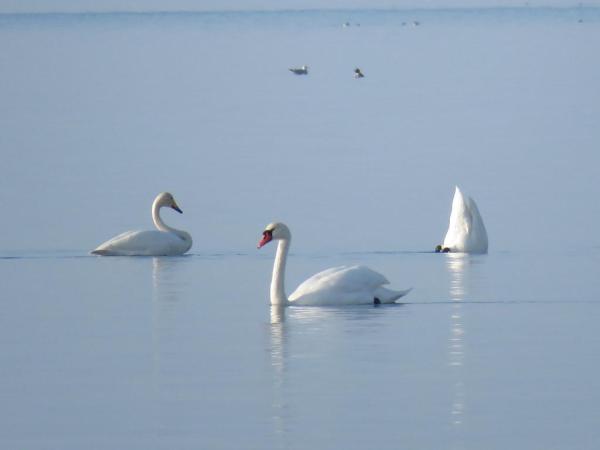
4. Common flamingo
The Greater Flamingo (Phoenicopterus roseus) exhibits nomadic and partially migratory movements, driven by the availability of food. These magnificent birds travel from West Africa to the Mediterranean, encompassing Southwest and South Asia, as well as Sub-Saharan Africa. During the winter, they regularly migrate to warmer regions, with breeding colonies mainly established in the Mediterranean and West Africa.
Flamingos are highly social and move in vast, densely packed colonies, consisting of up to 200,000 individuals during the breeding season. Outside the breeding season, the flocks are typically around 100 individuals.
While the Greater Flamingo is currently classified as a species of "least concern" by the International Union for Conservation of Nature (IUCN), its population trend is fortunately on the rise. The efforts made in France and Spain to counteract erosion and provide nesting islands have contributed to the species' improved reproduction rates.
In addition to their remarkable migration behavior, flamingoes have a wide range of fascinating characteristics that make them truly captivating. Make sure to check out our article, where we've compiled the most intriguing facts about flamingoes.

5. Black stork
The black stork (Ciconia nigra) is a species known for its migratory behavior, undertaking long journeys between breeding and wintering grounds. However, others may exhibit sedentary behavior, remaining in their breeding areas throughout the year. The migratory pattern of black storks can vary based on their geographical location and local environmental conditions.
During migration, it travels in a narrow front along well-defined routes, either individually or in small groups, with a maximum of 30 individuals.
Despite uncertainties regarding its population trend, the International Union for Conservation of Nature (IUCN) classifies the black stork as a species of "least concern." This status indicates that, at a global level, the species is not considered to be facing immediate threats to its survival.
Did you know that the black stork is a carnivorous bird? Explore more about the intriguing world of carnivorous avian species in this article.

Other migratory birds
Would you like to explore further? We have an extensive list of migratory bird examples available, allowing you to delve into more comprehensive information:
- White-fronted goose (Anser albifrons)
- Red-breasted goose (Branta ruficollis)
- Common teal (Anas crecca)
- Common scoter (Melanitta nigra)
- Red-billed gull (Chroicocephalus scopulinus)
- Osprey (Pandion haliaetus)
- Western marsh harrier (Circus aeruginosus)
- Montagu's harrier (Circus pygargus)
- Common sandpiper (Actitis hypoleucos)
- Gray Plover (Pluvialis squatarola)
- Northern lapwing (Vanellus vanellus)
- Red-throated diver (Gavia stellata)
- Purple heron (Ardea purpurea)
- Black kite (Milvus migrans)
- Great white pelican (Pelecanus onocrotalus)
- Squacco heron (Ardeola ralloides)
- Common swift (Apus apus)
- Common house martin (Delichon urbicum)
- Western yellow wagtail (Motacilla flava)
- Bluethroat (Luscinia svecica)
- Common redstart (Phoenicurus phoenicurus)
- Northern wheatear (Oenanthe oenanthe)
- Red-backed shrike (Lanius collurio)
- Reed bunting (Emberiza schoeniclus)
As mentioned earlier, migratory behavior is not limited to birds; there are numerous other fascinating animals that embark on incredible journeys. Discover more about these extraordinary migratory creatures in our article "20 Incredible Animals That Migrate."
Birds that migrate the longest
The arctic tern (Sterna paradisaea) holds the title for the longest migration in the world, covering an astonishing distance of over 70,000 kilometers. These remarkable birds breed in the cold waters of the North Pole during the summer months in that hemisphere. By the end of August, they embark on their incredible journey towards the South Pole and arrive there around mid-December. Despite weighing only about 100 grams, they possess impressive wingspans ranging from 76 to 85 centimeters.
Another migratory bird that rivals the arctic tern in its extraordinary journey is the Sooty Shearwater (Puffinus griseus). These individuals follow a migratory route from the Aleutian Islands in the Bering Sea to New Zealand, covering a staggering distance of 64,000 kilometers.
In the image provided, you can observe the migration routes of five arctic terns, tracked from the Netherlands. The black lines represent their journeys to the south, while the gray lines depict their return journeys to the north.

If you want to read similar articles to What Are Migratory Birds? - A Guide to Bird Migration, we recommend you visit our Facts about the animal kingdom category.
- BirdLife International 2016. Hirundo rustica. The IUCN Red List of Threatened Species 2016: e.T22712252A87461332. http://dx.doi.org/10.2305/IUCN.UK.2016-3.RLTS.T22712252A87461332.en. Downloaded on 22 August 2019.
- BirdLife International 2018. Larus ridibundus. The IUCN Red List of Threatened Species 2018: e.T22694420A132548687. http://dx.doi.org/10.2305/IUCN.UK.2018-2.RLTS.T22694420A132548687.en. Downloaded on 22 August 2019.
- BirdLife International 2016. Cygnus cygnus. The IUCN Red List of Threatened Species 2016: e.T22679856A85965262. http://dx.doi.org/10.2305/IUCN.UK.2016-3.RLTS.T22679856A85965262.en. Downloaded on 22 August 2019.
- Mathiasson, S. (2013). Eurasian Whooper Swan Cygnus cygnus migration with particular reference to birds wintering in southern Sweden. Wildfowl, 201-208.
- Li, S., Meng, W., Liu, D., Yang, Q., Chen, L., Dai, Q., ... & Yu, P. (2018). Migratory whooper swans Cygnus cygnus transmit H5N1 virus between China and Mongolia: combination evidence from satellite tracking and Phylogenetics analysis. Scientific reports , 8(1), 7049.
- BirdLife International 2018. Phoenicopterus roseus. The IUCN Red List of Threatened Species 2018: e.T22697360A131878173. http://dx.doi.org/10.2305/IUCN.UK.2018-2.RLTS.T22697360A131878173.en. Downloaded on 22 August 2019.
- BirdLife International 2017. Ciconia nigra (amended version of 2016 assessment). The IUCN Red List of Threatened Species 2017: e.T22697669A111747857. http://dx.doi.org/10.2305/IUCN.UK.2017-1.RLTS.T22697669A111747857.en. Downloaded on 22 August 2019.
- Fijn, RC, Hiemstra, D., Phillips, RA, & van der Winden, J. (2013). Arctic Terns Sterna paradisaea from the Netherlands migrate record distances across three oceans to Wilkes Land, East Antarctica. Ardea , 101(1), 3-13.
- Egevang, C., Stenhouse, IJ, Phillips, RA, Petersen, A., Fox, JW, & Silk, JR (2010). Tracking of Arctic terns Sterna paradisaea reveals longest animal migration. Proceedings of the National Academy of Sciences, 107(5), 2078-2081.
- Hedd, A., Montevecchi, WA, Otley, H., Phillips, RA, & Fifield, DA (2012). Trans-equatorial migration and habitat use by sooty shearwaters Puffinus griseus from the South Atlantic during the nonbreeding season. Marine Ecology Progress Series, 449, 277-290.
- Orange LG. 2004. Conference "Migratory birds and management planning of nature reserves." In: Technical meeting of the project "Conservation of habitats for migratory birds for migratory birds in the Orinoco River basin". Villavicencio, Meta.
- Ocampo-Peñuela, N. (2010). The phenomenon of bird migration: a look from the Orinoquia. Orinoquia, 14(2), 188-200.





